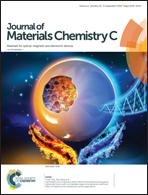Enhancement of fluorescence efficiency from molecules to materials and the critical role of molecular assembly
Abstract
Molecules exhibiting enhanced fluorescence emission in the aggregated/solid state are of immense interest in various functional materials applications. While most traditional fluorophores suffer fluorescence quenching upon aggregation, select molecules show fluorescence efficiency enhancement from the molecular to the materials state. An overview of these systems and the popular ‘aggregation-induced emission’ phenomenon is presented, followed by a critical appraisal of the related models largely focused on intramolecular structural motions. The enhanced fluorescence of crystals, nanocrystals, ultrathin films and amorphous particles of the family of diaminodicyanoquinodimethanes is discussed subsequently. Fluorescence switching accompanying amorphous–crystalline transformations in these materials is described; insights gained into two-step nucleation, crystallinity as a tool for the hierarchical assembly of molecular materials, and the new domain of functional molecular phase change materials, are highlighted. An emerging model that emphasizes the relevance of ‘specifically oriented aggregation’ in molecular assemblies and intra/intermolecular effects, with consequences for new materials designs is discussed in the final part.

- This article is part of the themed collection: Recent Review Articles


 Please wait while we load your content...
Please wait while we load your content...